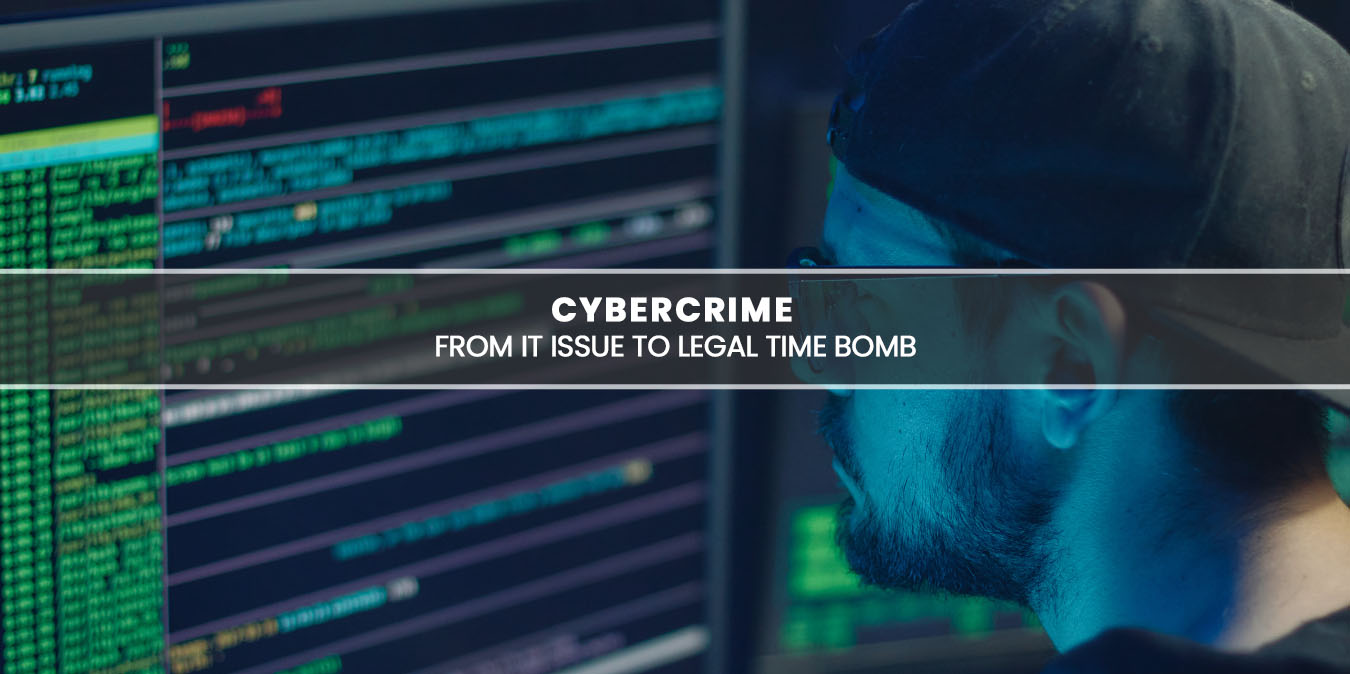On April 23, 2025, the FBI’s Internet Crime Complaint Center (IC3) released its 2024 annual report – and it deserves
close attention from the legal community.
As advisors to businesses navigating increasingly complex digital environments, the trends outlined in this report
are more than data points. They’re signals—loud and clear—that cyber threats are evolving at a pace few industries
are fully prepared for.
And the impact of these threats today goes beyond the IT department. Cybercrime now intersects with regulatory risk,
fiduciary responsibility, litigation exposure, and ultimately, business continuity.
ANALYSIS
Numbers Don’t Lie
The 2024 IC3 report gives us a clear signal: the cybercrime wave is swelling.
- 859,532 complaints were filed in just one year.
- Victims suffered $16.6 billion in reported losses—up from $12.5 billion the previous year.
- Seniors (60+) took the hardest financial hit: $4.8 billion lost across 147,127 cases.
- Crypto fraud exploded, with $9.3 billion in losses—a 66% jump
- Ransomware attacks surged 9%, mainly targeting critical sectors like healthcare, finance, and manufacturing.
Top Cybercrime Categories:
- Phishing/Smishing/Vishing: 298,878 reports
- Personal Data Breach: 55,851
- Non-Payment/Non-Delivery: 50,973
- Extortion: 39,262
Not All News is Bad – The Positive Impact:
- Increased federal funding and task forces
- Surge in private-public cyber collaboration
- Advanced fraud detection technology is gaining traction
While states like California, Texas, Florida, New York, and Ohio topped the list of most affected regions, what stood out to us the most was not just the increase in numbers—but how targeted, tailored, and strategic many of these attacks have become. These are not random, opportunistic hacks. Modern cybercrime is a targeted, calculated and often coordinated effort that typically exploits gaps in human behavior, corporate policy, and third-party oversight.

Why This Matters for Attorneys and Their Clients
Cybercrime is a broader risk management concern. As the FBI data shows, the legal implications of cybercrime are becoming more pronounced. When breaches occur, businesses don’t just face downtime—they encounter regulatory inquiries, potential shareholder action, client distrust, and costly litigation.
In our experience, the call for help usually comes after the fact—when the breach has happened, and leaders are scrambling to understand what went wrong. For the legal team, this creates a reactive posture: reviewing insurance language, engaging regulators, assessing data privacy obligations, and preparing for possible class actions. All done under tight deadlines.
A more proactive approach—rooted in preparedness, internal training, and legal foresight— can significantly reduce both exposure and operational chaos.
Building Digital Resilience
At Ampcus Forensics, we help our clients stay ahead of bad actors in 5 strategic ways:
- Proactive Risk Modeling Simulate worst-case scenarios.
From ransomware outbreaks to vendor disruption, our analytics help you plan for the “what ifs”—before they become “what now?” We build tailored models that anticipate operational disruptions, enabling better insurance planning, contract structuring, and resource allocation. - 24/7 Digital Incident Response Hackers don’t work 9-to-5, and neither do we.
Our experts do, however, act fast to contain threats, trace origins, and limit downtime. Our round-the-clock team of digital detectives and AI agents spring into action when the alert hits—minimizing reputational risk and operational chaos. - Litigation-Ready Financial Forensics Quantifiable proof is hard to litigate against.
From damage assessments to expert testimony, we provide quantifiable proof that stands up in courtrooms and insurance claims. Whether you’re facing regulatory scrutiny, insurance disputes, or business interruption claims, we document the impact precisely, backed by forensic accounting and investigative rigor. - Leadership and Legal Team Training Cyber Bootcamp.
With this training, our sessions empower both leadership and the boots on the ground team members with real-world scenarios, policy guidance, and red flag awareness to act swiftly and decisively. - Advanced Fraud Detection AI-driven analytics create clarity.
We go beyond the basics. Our AI-driven analytics detect behavioral anomalies, unusual transactions, and insider threats that routine audits and security protocols often overlook.

The Case That Shouldn’t Have Happened: A $100M Email Scam
One case we often point to is the 2024 Business Email Compromise (BEC) scam that tricked both Facebook and Google into wiring over $100 million to a fraudulent supplier. A lone attacker, posing as a trusted vendor, fabricated invoices and forged email communications—bypassing internal controls.
If two of the world’s most technologically advanced companies can fall victim, what does that mean for mid-sized businesses or professional service firms with fewer safeguards?
The legal consequences in such cases extend well beyond the theft. They can involve breach of fiduciary duty claims, insurance disputes, contractual litigation, and regulatory fallout—especially if the client operates in finance, healthcare, or other highly regulated sectors.
The Bottom-line: Legal Teams Should Lead the Conversation on Cyber Risk
The FBI’s IC3 report is a call to action: For attorneys advising clients in today’s risk-heavy environment, understanding the scope and nature of cyber threats is no longer optional but a core component of safeguarding business continuity, client trust, and corporate compliance.
What was once just about preventing access to systems, cybersecurity now means protecting financial assets, contractual integrity, reputational capital, and legal posture. And this puts attorneys in a critical position—not just as responders, but as advisors who can drive more resilient frameworks before a breach occurs.
As you counsel clients in areas like governance, compliance, M&A due diligence, or vendor management, cyber readiness should now be part of the conversation. Policies should be reviewed. Internal controls should be stress-tested. Incident response plans should include legal protocols—not just technical ones.
Every member of the legal community now has an essential role to play in redefining how organizations think about cyber preparedness—not only after a breach, but long before one ever happens. And we are here to support you.
Let’s not wait until we’re all reacting to an incident when we can instead be helping clients prevent one together.
Sources
- FBI Internet Crime Complaint Center (IC3) 2024 Report
- Axios: Record $16.6B in Cybercrime Losses
- Reuters: FBI Flags Rise in Ransomware Threats

